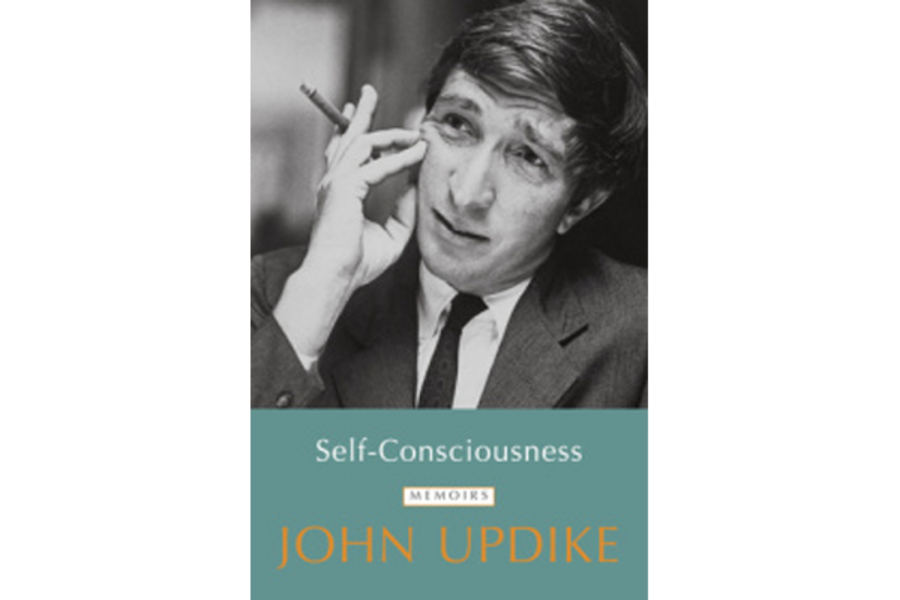Sometimes you can judge a book by its cover – and its font
Loading...
A few weeks ago, in a Jan. 1 blog post here at Chapter & Verse, I announced my New Year’s resolution to read all of John Updike’s books by year’s end. I encouraged readers to find their own author and read him or her clean through in 2015 – a chance, through the sustained company with a single literary voice, to achieve something like friendship with the writer behind the oeuvre.
My project’s going well, although it hit a small snag that, now resolved, has taught me something not only about what we read, but how we read.
My problem surfaced with Updike’s “Self-Consciousness: A Memoir,” a book I seemed destined to like but that, somehow, had always resisted my earlier attempts to read it. I’d picked up a small paperback edition of the book during a business trip to Boston a decade ago, ready to indulge a writer I’d always enjoyed. Even so, for reasons I couldn’t quite fathom, I’d return the book to the shelf after a chapter or two, feeling vaguely overwhelmed.
Updike’s prose, sterling as ever, didn’t seem to be the problem, nor did the book’s length, which clocked in at a reasonable 271. Recently, for the 10th time in as many years, I picked up “Self-Consciousness” again as part of my pledge to make 2015 an Updike year. Predictably, given my history with the book, the experience left me cold.
That’s when it hit me. My ambivalence about “Self-Consciousness” really had nothing to do with Updike’s work. It was the book itself that resisted me. The type was cramped on the page, as if it had been shoved into an overstuffed lifeboat, and the cheap binding, compromised by loose pages that had quickly yellowed with age, gave me a persistent message:
“The book you are holding is nothing special. Maybe you should spend your time reading something else.”
The only thing to do, as far as I could see, was to order a better editon of Updike’s memoir, something I’ve never been inclined to do. Although an ardent bibliophile, I’ve prided myself on not being one of those prissy book snobs who spend more time fawning over a book’s cover and typography than savoring what the author has to say.
But now I’ve come to see that the physical quality of a book should, in some measure, complement the quality of the author’s text. Which is why my new copy of “Self-Consciousness” – the lovely 2012 softcover published by Random House – seems like such a better fit for the story inside, and for me. The type is nice and big, and the pages are airy – qualities that that Updike, a great fan of visual art and traditional, printed books, certainly would have liked.
I’m halfway through “Self-Consciousness” now, well on my way to finishing it. The improved format has made all the difference in the world. E-books, of course, hold out the promise of text that’s malleable, potentially available in any kind of font – or font size – that we might want. And as Baby Boomers age, the appeal of books in larger type can only continue to grow.
All of which leads to my next suggestion: If there are a few books on your shelf that you’re supposed to like but somehow don’t, consider trying them in a different edition.
It might not be the writer giving you trouble, but the book that contains his words.
Danny Heitman, a columnist for The Advocate newspaper in Louisiana, is the author of “A Summer of Birds: John James Audubon at Oakley House.”







